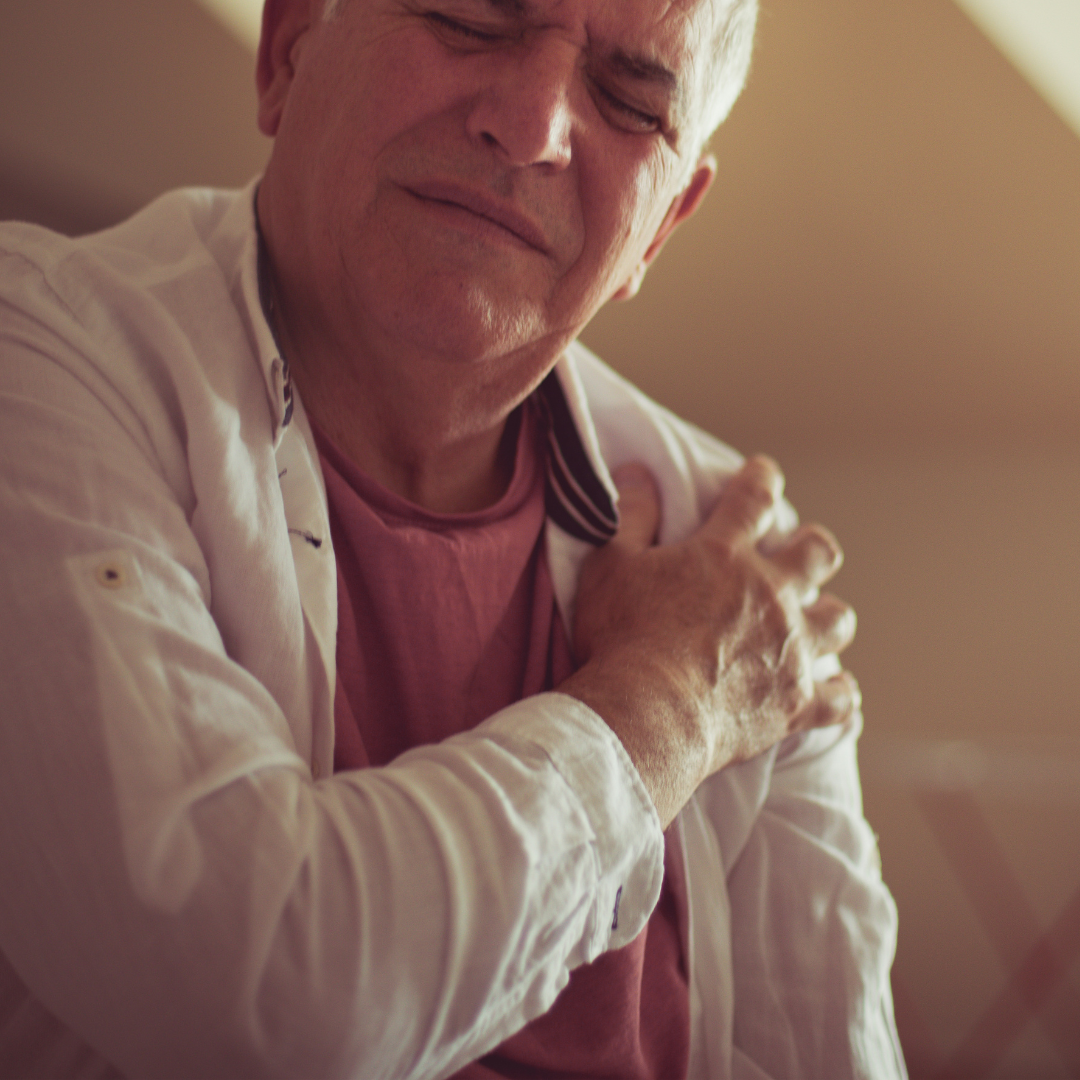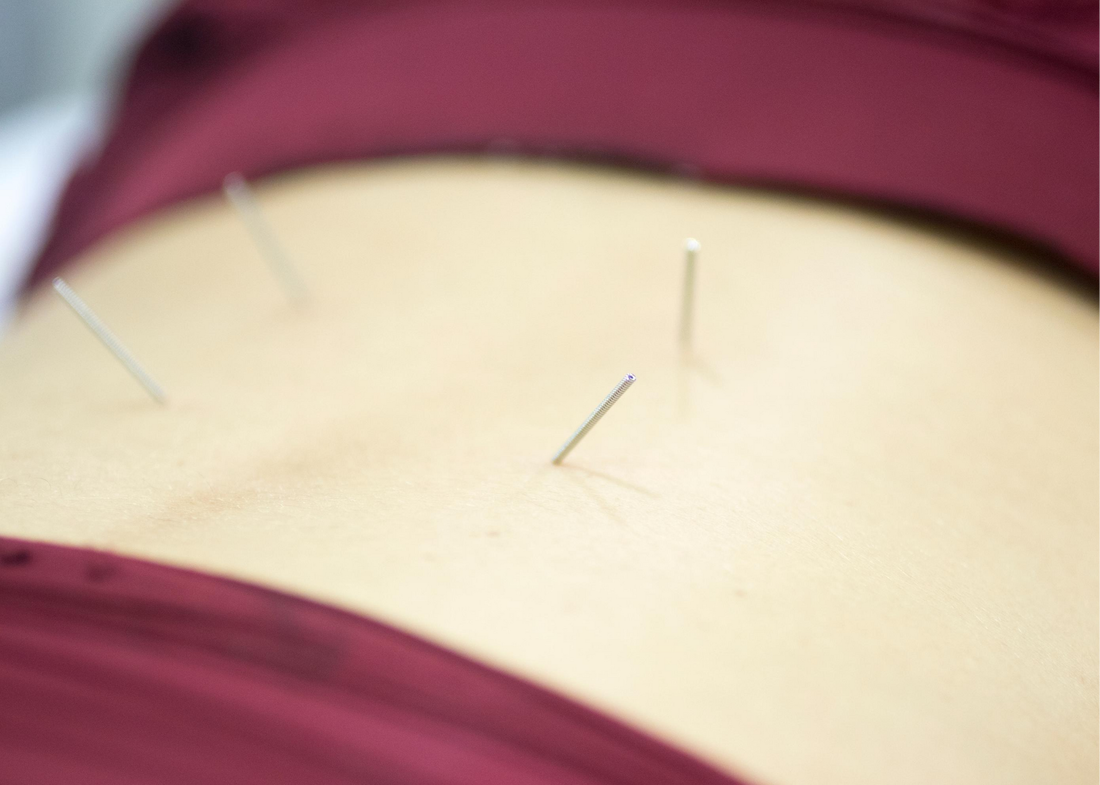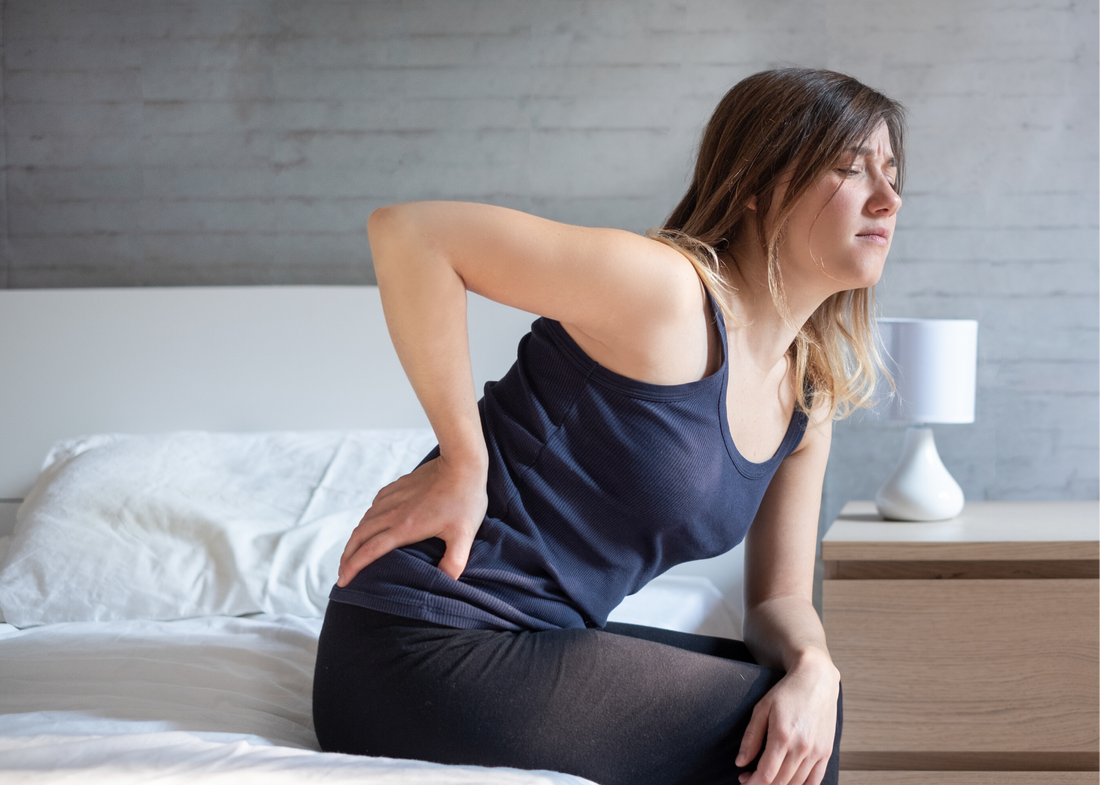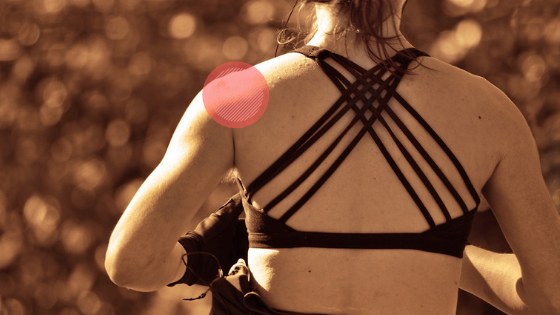|
Bursitis is a really common cause of persistent shoulder pain. It can cause significant discomfort and limit our ability to perform daily activities. This common condition, characterised by inflammation of the shoulder's bursa, often results from repetitive motions or injury. In this blog post, we will explore what shoulder bursitis entails, its symptoms, and how myotherapy can play a crucial role in its effective treatment. The shoulder joint is surrounded by small, fluid-filled sacs called bursa, which act as cushions between bones, tendons, and muscles. With a normal, well-functioning bursa, shoulder movement is smooth, effortless and without pain.
When these bursae become inflamed, it leads to a condition known as bursitis, and it can cause a lot of highly sensitive pain. Repetitive overhead movements or a direct trauma like a fall onto your outstretched arm can cause irritation of the bursa and surrounding tissue, and this can result in pain, tenderness, and limited range of motion. Additionally, factors like muscle imbalances and spending a long time in a position that strains the shoulder can contribute to the development of bursitis. Bursitis typically feels worse at certain points in the day - the first thing in the morning is often a time of stiffness and increased pain, with that sensation easing somewhat as you begin moving. After a period of inactivity it can become sensitive again, or following overexertion or repetitive activities. Inflammation makes the area feel irritated, stiff, achey, and sore. Myotherapy is a form of manual therapy that targets the soft tissues, including muscles, tendons, and ligaments. As Myotherapists, we aim to relieve your pain, restore your mobility, and promote healing through a variety of techniques, tailored to your specific needs. In the case of shoulder bursitis, myotherapy can provide several benefits.
Shoulder bursitis can be a debilitating condition, limiting our daily activities and causing persistent pain. While traditional treatments focus on symptom management, myotherapy offers a holistic approach to shoulder bursitis treatment. By addressing muscle imbalances, reducing pain and inflammation, and improving range of motion, myotherapy helps individuals regain functionality and prevent future complications. If you're experiencing shoulder bursitis, consulting with our qualified myotherapists can be a valuable step towards finding relief and embarking on the path to recovery. Remember, early intervention and consistent treatment are key to effectively managing shoulder bursitis and restoring your quality of life. Book a time with our wonderful myotherapists or phone our clinic on 03 8204 0970 for more information. Dry Needling is a manual therapy technique used by Myotherapists to help reduce pain and tension in muscles. We've previously discussed the similarities and differences between Dry Needling and Acupuncture, but you may still be wondering - how does Dry Needling actually work? The "Dry" Needle
The reason they are called "dry" needles is to differentiate them from hollow needles like the ones used for blood tests or vaccinations. A dry needle can't inject or withdraw fluids from your body. The needles themselves are ultra thin and flexible. They come with a guide tube to allow us to place them with care and precision. All needles used for dry needling are single use only. Where We Apply It Myotherapists use dry needling in painful, tight or restricted muscle groups. You may have heard about Trigger Points - those painful, tight bands that can form within a muscle over time, with repeated use or from injury. Dry needling is a technique that helps address these trigger point areas in a very specific and precise way. We assess the areas through watching you move and through palpating the muscles to find the best spots within the muscle to position the needle to relieve the trigger point. We also assess the surrounding joints and muscles, for example for hip pain we may find that dry needling in your lower back or in your thigh can help relieve pain and strain from your hip. What Happens When We Needle A Trigger Point? When we first insert the needle to the muscle, it can be felt as a little pinprick sensation on the skin. We then guide the tip of the needle into the right angle and depth of the muscle to directly stimulate the trigger point. This takes some skill and the ability to visualise in 3D the target muscle and the surrounding tissue like nerves, veins, arteries, bones and ligaments. By applying the needle into that trigger point, it causes a combination of chemical and electrical responses by the muscle. The micro damage causes by inserting the needle sends chemical messengers to the brain to get a healing response to occur. It can also cause a nerve impulse to occur, making the muscle twitch and release. To Stimulate or Not To Stimulate Because our aim in using dry needling is to get a change in the muscle tension, we often can stimulate the needle. This means we might gently move the needle in a pulsing in/out movement to repeatedly stimulate the trigger point, or we might twist the needle in a particular direction or in a series of back and forward movements. Stimulation of the needle can lead to more twitching, what we call Local Twitch Response. Dry needling can be effective even without the involuntary muscle twitch response. Some practitioners prefer a more intensive stimulation of the needles, however we prefer a gentle and slow approach. Does Dry Needling Hurt? In most cases, not really. Which is often surprising! The most common sensations you'll feel are the pinprick of the needle being positioned, a dull aching or tightening sensation around the needle, and the quick twitching response of the muscles releasing. The twitching can sometimes feel intense, but only lasts a very short time. After needling, some people can experience a little localised soreness at the sites of the needles, but most people just feel relief from tension and pain in those areas. Is Dry Needling Safe? In the hands of a trained practitioner, dry needling is a safe and effective technique. Myotherapists undergo many months of training and assessment in the skillful use of dry needling, however not all practitioners who offer dry needling are Myotherapists. Remedial Massage Therapists, Chiropractors, Physiotherapists, and other skilled practitioners can opt to undertake short courses in dry needling. Here in the Simple Wellness Myotherapy clinic, we only allow our Myotherapists to use dry needling on our patients, and we strongly believe that a weekend short course is not enough time to develop the skills needed to use dry needling safely and effectively. What Sort Of Pain Can Dry Needling Help Treat? Dry needling is great for releasing tight trigger point areas all throughout the body. It can be effective in treating headaches, neck and shoulder pain, back pain, bursitis, pain from disc injuries, sports injuries, plantar fasciitis - so many things! Want to try dry needling for your muscle pain? Book an appointment with one of our Myotherapists. Does this sound familiar?
These can be signs of hip bursitis, which is an inflammatory condition that can be a very common cause of hip pain. The good news is that we help people with this all the time, and we can get you started on a treatment program to help reduce the pain and build up the strength in your hip! What is Bursitis?
Bursitis is the name of a condition where the bursa in your joints become inflamed. Bursa are the fluid-filled sacs that help cushion joints and reduce friction as the joint moves. Healthy bursa are important in pain free movement. When the bursa becomes inflamed it swells and becomes highly sensitive. The joint doesn't move easily, and the muscles surrounding it can become painful and tight trying to protect the joint. Bursitis can cause acute pain that increases with physical activity. If the inflammation remains active for a long time, the pain can progress to a chronic state. What causes hip bursitis? The most common causes of bursitis are things like overuse or strain on the hip joint. This can happen through a high level of exercise or activity, or through repetitive unbalanced activities like holding a baby on one hip, or leaning your weight to one side to avoid pain in other areas like your lower back, knee or ankle. Other causes can be less common things like infection or gout within the joint. People with autoimmune conditions like rheumatoid arthritis can be more vulnerable to developing this inflammatory condition. How can we help? Remedial massage and myotherapy can help relieve painful symptoms of hip bursitis. We can reduce muscle tension around the hip joint, and assess the other areas above and below the painful hip so that we can address any issues that are contributing to your bursa becoming irritated. Taping for stability and support can be very useful, and can help relieve pain for longer. We can give you a program of exercises to gradually strengthen your hip without increasing the irritation. Book a time with us to get the ball rolling. Should I see a doctor? If your hip pain has been ongoing for quite some time, it can be a good idea to check in with your doctor. Your GP can advise you if a course of anti inflammatory medication will be helpful for you, or you can ask your pharmacist for an over the counter recommendation for symptom relief. We're lucky to be located inside Together Medical Family Practice in Knoxfield, where you can get access to a fully Bulk Billed GP in the clinic with us and an understanding pharmacy team downstairs. Have you recently been diagnosed with bursitis, but aren’t quite sure what that means? We’ve got you covered. Here are the basics you want to know about bursitis and what can be done about it. What is bursitis?
Throughout your body, you have bursa – small fluid-filled sacs that prevent friction between your bones, tendons and muscles around your joints. Bursitis is when a bursa becomes irritated and inflamed. Bursitis commonly occurs in the shoulder, elbow or hip. However, you can experience bursitis in any bursa. The most common symptoms include pain, swelling and stiffness of the joint. Pain will often increase during the night time, and becomes worse when you move the joint. What can cause bursitis? There are many factors that can cause or contribute to bursitis. Some of the most common include:
How is bursitis diagnosed? This depends on who you see. Any health professional will take a case history and do a physical examination. If you seek help from your doctor, they may order imaging tests to rule out other problems that might be causing your symptoms, or they may order a test of the fluid from your bursa to see if there is an infection. How is bursitis treated? The focus of bursitis treatment depends on what caused the problem in the first place. But it’s likely that treating your bursitis will include:
If the cause is an infection, your doctor may prescribe antibiotics to resolve the infection. A small percentage of people may be recommended surgery if other treatments have been unsuccessful. How myotherapy can help with bursitis When it comes to bursitis, there are a few steps that your myotherapist will take. Firstly, we will assess the joint itself for swelling, inflammation, pain and movement. Once we know what we’re working with, we’ll put together a treatment plan to address the issues. A treatment plan for bursitis often includes:
Another useful therapy that may be discussed is hydrotherapy – exercises and movements performed in warm water. This can reduce pressure on the joint, making therapeutic movements easier and less painful. If you’re dealing with bursitis, the team at Simple Wellness Myotherapy are here to help. To book an appointment with one of our qualified myotherapists, click here. Have you ever been diagnosed with bursitis? It’s one of the most common injuries I see in clients. But you don’t have to just put up with the pain – there are ways that myotherapy can help. What is bursitis?
Simply put, bursitis is the inflammation of the bursa. Bursa are the soft fluid-filled cushion sacs that protect the bones, tendons and muscles around the joints. When they are functioning properly, they make it easy for tendons and muscles to move smoothly at the joint. When these fluid-y sacs become inflamed, they get swollen and enlarged, which can make movement difficult due to the physical space the bursa now takes up in the joint. The inflammation process also increases sensitivity in the area, giving you that familiar feeling of pain and aching in the joint. You have over 150 bursa throughout your body, so that is more than 150 places bursitis can occur. That being said, the most common bursitis I see is in the shoulder and hip joints. Less common locations include the toes, knees and elbows. What can cause bursitis? There are a number of factors that can cause or lead to bursitis. The most common are injuries, repeated pressure and overuse of a joint. But there are some chronic conditions that can lead to bursitis such as diabetes, rheumatoid arthritis and even an infection that reaches the bursa. What are the signs and symptoms of bursitis? The most common symptoms you’ll come across are:
What is the medical treatment for bursitis? Most of the time, doctors will refer you onto a musculoskeletal therapist such as a physiotherapist, osteopath or myotherapist (like me!) In severe cases, they will do an injection of cortisone, an anti-inflammatory steroid, into the joint. Although this can make you feel better temporarily, it is a bit of a bandaid approach. If you don’t remove the cause of the bursitis, you’ll have to keep getting a giant needle into the joint – ouch! Cortisone injections aren’t a guaranteed fix, and can have a limited time of effect from very short term (days or weeks) to longer term relief (months or years). Some patients may not get any relief at all, even temporary. I always like to remind people who are considering the injection that my opinion is a biased one – I tend to only see the people who the cortisone shot hasn’t worked for, because if it works, they don’t need to come back for treatment for that same bursitis issue! How can a myotherapist help with bursitis? Wanting to avoid the big needle into the joint or just prefer to manage your condition naturally? A myotherapist like myself can work on the acute pain and address the causes behind the bursitis. There are plenty of ways that the different techniques of myotherapy can help, including::
By working on the aggravating factors and finding ways to modify them, we can reduce the pain and inflammation over the long-term. Is the pain of bursitis holding you back from the things you love to do? Book an appointment today and we’ll get you back on track to health |
Meet Our Team
We have a team of great practitioners available 7 days a week at our Rowville clinic. Archives
July 2024
Categories
All
|
Got a question about Myotherapy?
Contact Mel by phone, email or Facebook
|
Simple Wellness Myotherapy & Remedial Massage Clinic
Shop 12B 150 Kelletts Rd Rowville VIC 3178 |
Phone us on
03 8204 0970 |






 RSS Feed
RSS Feed